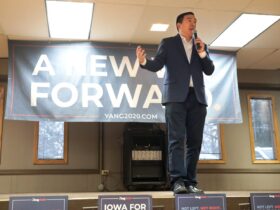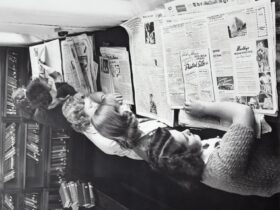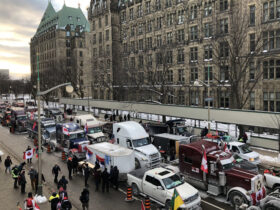“Take Back Control” was the slogan of the Leave side during the 2016 Brexit referendum in Britain. It resonated powerfully with the working class, who knew they’d been losing control relentlessly over their workplaces and communities for decades. The Brexit vote, being powered by lower-income voters, showed that Brexit, to some extent, was a class issue.
Now, Britain has left the EU. But workers have kept losing control, and face escalating attacks from employers. The recent mass sackings carried out by the company P&O Ferries, which has laid off 800 sailors in a move that the CEO admitted was against the law, are no exception. Political issues in Britain today are often framed in terms of the pro-and anti-Brexit divisions and so some immediately seized upon the P&O sackings as evidence that leaving the EU had, contrary to worker hopes, actually eroded workers’ rights. Is this true?
While the company admits it acted illegally, the P&O management indeed felt confident that it would avoid any consequences of taking this action. To understand the relation of this action to Brexit and the question of worker control, we need to get to the heart of why Britain joined the predecessor to the EU, the European Economic Community (EEC), back in 1972.
The entry of Britain into the EU was one that, at the time, was opposed almost uniformly by the Labour movement, which deemed that it sidelined worker interests for employers’. Even the bulk of Labour MPs opposed it, many citing the anti-democratic nature of the EEC and how it undermined British parliamentary sovereignty. All of this was happening at a time when the working class was locked in a series of battles across British industry, triggered by economic pressures on British capitalism.
These struggles often looked very different from what we regard as trade union struggles today. Although the trade union leaders at the time were household names, their prominence was based not just on their official status but their backing by the power wielded by the many thousands of shop-floor trade unionists. The role of the trade union leaders at the time was frequently that of organizers of strikes on the factory floor level, with strike votes taken by show of hands followed by a walkout. The union officialdom would frequently be left desperately trying to catch up with moves made by the rank and file.
The power of what became known as the “shop stewards” movement was such that ideas regarding democratic workers’ control of industry came to be not merely fringe ideas but saw manifestations in factory takeovers and occupations in the 1970s. The legendary Upper Clyde Shipbuilders factory occupation radicalized many workers but also senior Labour politicians such as Tony Benn. The shop stewards movement in the auto industry was powerful enough to not only prevent redundancies but to challenge management’s control over production. Ideas on worker control of industry were even included in the Labour Party manifesto of 1974. Benn in his role as Secretary of State for Trade and Industry tried to implement these ideas only to be stymied by the state’s institutionalized civil servants, and eventually removed from his job by Prime Minister Harold Wilson via a cabinet reshuffle.
This mass movement of the working class, powerful enough to challenge the “rights” of employers, was deemed unacceptable by the British ruling class. The “concerns” of the ruling class regarding the power of the working class after 1945 during the “post-war consensus” were expressed by several post-war liberal intellectuals, such as Robert Dahl. These argued that liberal democracy was endangered by too many people participating in political activity. These concerns certainly animated the leadership of the Conservative Party and the officialdom of the British state following the collapse of the Heath government under the strain of the 1974 miners’ strike. In her later memoirs, Margaret Thatcher expressed the true goal of the traditional party of British capitalism when she stated that they aimed to destroy the power of “the militants” and reinforce the power of the moderate union leaders. The aim, successfully pursued, was to destroy not the unions themselves but what had made them into formidable organizations that could challenge the rights of employers over control of production, and crush what Gramsci referred to as the “organic intellectuals” of the working class. They also sought to safely incorporate the trade union leadership in a new bureaucratic industrial relations structure and draw them away from democratically garnered pressure from the grassroots.
A similar aim was being pursued with regard to the broader political structure. The Conservative Party, and second the Labour leadership, wished to institutionalize the retrenchment of democratic participation which had been initiated at the trade union level into the rest of the British political machinery. Both the Conservative and Labour leadership wished to ensure that (in Thatcher’s words) there was no alternative to bureaucratic rule. EU membership was crucial in this respect. By embedding more and more policy decision-making into the EU, successive British governments sought to place aspects of economic, trade, and employment policy beyond the scope of democratic control of even the limited form that the working class could hope to exercise previously via parliament. The EU and its vast bureaucratic structures handed down policy to be rubber-stamped by national parliaments and incorporated into local law. The participation of the working class in political life had largely ended except for routine turn out to vote in national elections.
This brings us to Brexit and why the executives at P&O felt confident enough to carry out illegal mass firings. The decision to leave the EU may have represented a working-class rebellion but it has not changed the balance of forces in favor of the working class. The British state, though exited from the EU, has retained the highly bureaucratic and undemocratic structure it had evolved into over the decades since 1970.
As stated above, what made the workers’ movement a powerful force was the active participation in various levels of democracy, given energy by the shop-floor organizing efforts of the shop stewards. Their ability to organize in such a way as to push the official, bureaucratic structures of the trade unions into adopting more radical positions has not been recreated. It was this layer of activists that was able to expand and defend workers’ rights. Only the re-emergence of a renewed version of this would see the working-class movement able to effectively resist the ruthless practices such as the P&O executives have displayed. Until then, the slogan “Take Back Control”, which resonated so powerfully with the working class in 2016, remains unrealized despite, but not because of, Brexit.









